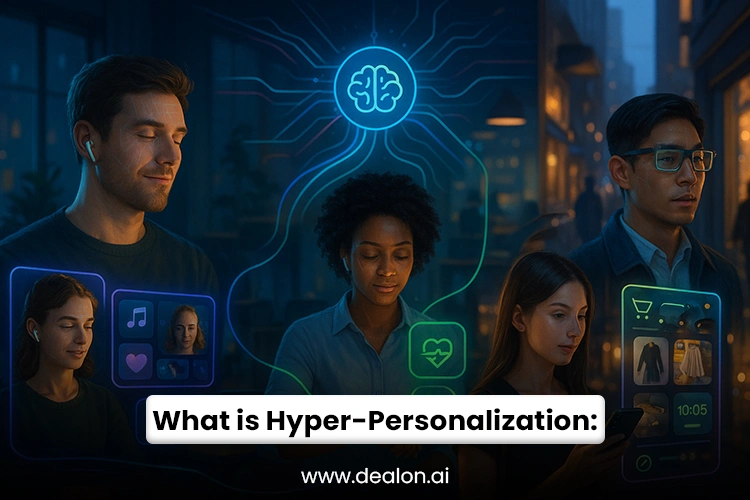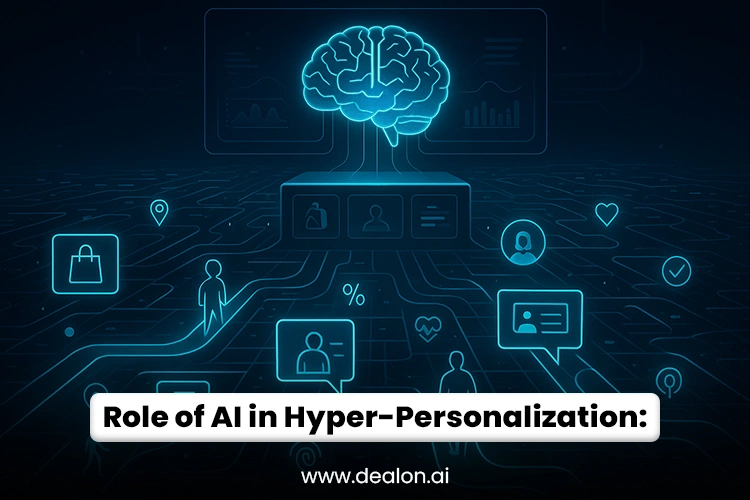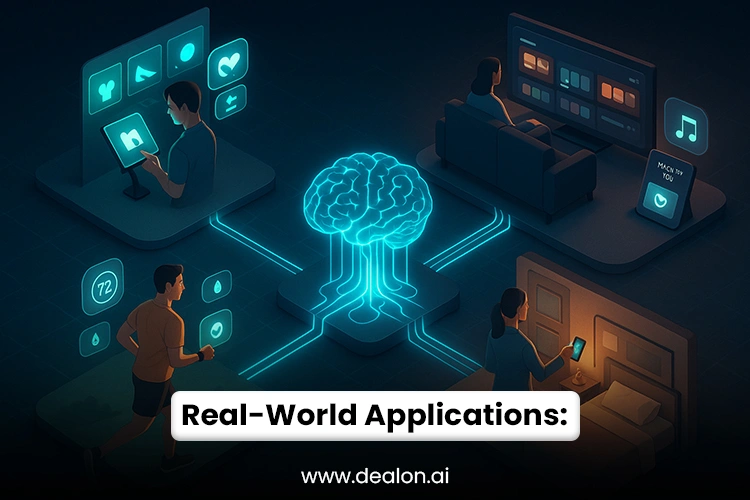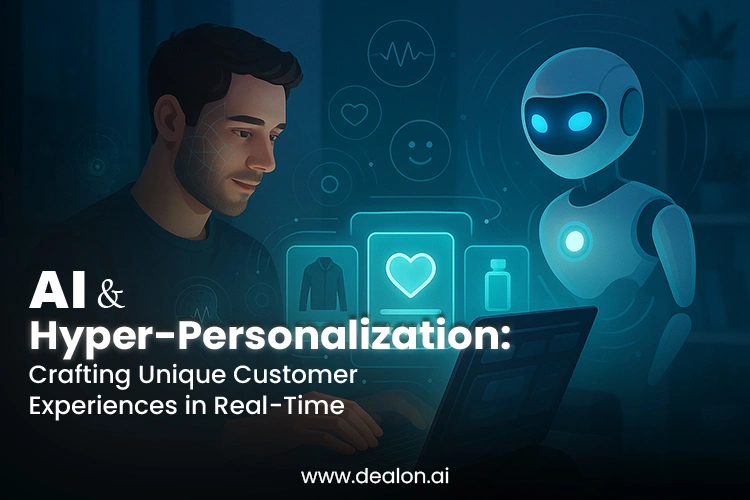In today’s hyper-connected digital era, consumer expectations are not just rising—they are evolving at an extraordinary pace. The traditional, one-size-fits-all approach to marketing has become obsolete, as modern audiences demand interactions that are not only relevant but deeply personalized. Enter hyper-personalization, a groundbreaking strategy fueled by artificial intelligence (AI) and data analytics.
Unlike conventional personalization tactics, hyper-personalization delves deeper, harnessing real-time behavioral data, preferences, and predictive analytics to create experiences that feel tailor-made for each individual. With advanced MLA, businesses can anticipate customer needs, deliver contextually relevant solutions, and foster an unparalleled sense of connection.
This paradigm shift is more than a technological upgrade—it’s a redefinition of customer engagement. Hyper-personalization transforms how brands communicate, fostering genuine loyalty and driving sustained profitability. Whether it’s e-commerce platforms recommending precisely what a shopper needs or streaming services predicting the perfect movie for a quiet evening, hyper-personalization ensures every interaction resonates on a personal level. By prioritizing innovation and individual relevance, hyper-personalization paves the way for the next era of customer-centric experiences, where every interaction feels unique, intuitive, and seamless.
Also Read: Human-Centric AI: Designing Chatbots That Respect User Preferences and Boundaries
What is Hyper-Personalization?

Hyper-personalization transcends the boundaries of traditional personalization, redefining how businesses interact with their audiences. Leveraging real-time data, artificial intelligence (AI), and machine learning enables brands to deliver profoundly tailored experiences that cater to individual preferences and needs. Unlike rudimentary personalization—such as inserting a client’s name in an email—hyper-personalization uses expansive data points to craft interactions that feel bespoke and intimately relevant.
This innovative approach delves into customer browsing behaviors, purchase histories, geographic locations, social media activity, and psychological and emotional triggers. For instance, a streaming service might analyze the time of day a user prefers specific genres, pairing it with mood indicators to recommend content that aligns perfectly with their emotional state.
Hyper-personalization’s ability to adjust instantly based on real-time data makes it unique. Powered by machine learning, it continuously refines recommendations and interactions based on evolving customer behavior. This dynamic adaptability fosters a sense of exclusivity, making each customer feel uniquely understood.
Beyond enhancing user experience, hyper-personalization unlocks opportunities for brands to establish deeper emotional connections with their clients. It’s no longer about offering relevant products; it’s about predicting and fulfilling needs before they are expressed. This proactive engagement drives loyalty, elevates conversion rates, and creates a competitive edge in an overcrowded marketplace.
Moreover, hyper-personalization is not confined to retail or e-commerce. Industries like healthcare, education, and entertainment are embracing its potential. For example, personalized treatment plans in healthcare or adaptive learning platforms in education exemplify its transformative impact.
The Role of AI in Hyper-Personalization

Artificial intelligence (AI) is the cornerstone of hyper-personalization, equipping businesses with the computational prowess and analytical depth required to transform raw data into actionable insights in real time. By unlocking the potential of AI, brands can transcend traditional personalization and deliver nuanced, hyper-relevant experiences that resonate on an individual level. Below are the pivotal ways AI drives this transformation.
AI excels at processing and synthesizing massive datasets from diverse sources—such as websites, mobile apps, social media platforms, and customer relationship management (CRM) systems—in milliseconds. This instantaneous analysis enables brands to understand customer intent and behavior as it unfolds, ensuring every interaction is timely and contextually relevant. For instance, a retail website powered by AI can adapt product recommendations dynamically based on a user’s browsing activity, enhancing conversion rates and user satisfaction.
AI’s ability to analyze past behavior and predict future actions is at the heart of hyper-personalization. AI anticipates needs through advanced machine learning algorithms before they are articulated. For example, a fashion retailer can use AI to identify when a customer might require seasonal apparel and send tailored recommendations, delivering unmatched convenience and fostering loyalty.
AI enables the creation of bespoke content, whether personalized emails, product suggestions, or landing pages. These AI-driven tools adapt to individual preferences in real-time, ensuring that every touchpoint feels uniquely tailored. This dynamic adaptability boosts customer engagement and nurtures long-term relationships.
AI-powered chatbots and virtual assistants elevate client interactions by adapting their tone, recommendations, and responses based on the user’s preferences and history. This human-like personalization fosters seamless communication, creating an intuitive and authentic experience.
AI’s role in hyper-personalization is nothing short of transformative, empowering businesses to craft interactions that are not only relevant but deeply meaningful.
Benefits of Hyper-Personalization
Embracing hyper-personalization unlocks transformative benefits for businesses and customers, redefining how brands engage their audiences. By leveraging advanced AI-driven insights, companies can deliver experiences that resonate deeply with individuals, resulting in mutual gains. Below are the key advantages of hyper-personalization:
At the core of hyper-personalization is its ability to create an unparalleled customer journey. Businesses foster a sense of appreciation and belonging by delivering contextually relevant recommendations, exclusive offers, and real-time interactions. Clients are no longer just buyers but valued participants in a personalized dialogue. This emotional connection strengthens brand affinity and drives sustained loyalty. For example, streaming platforms like Netflix use hyper-personalization to recommend content, creating a profoundly immersive experience tailored to each user’s preferences.
Hyper-personalized experiences streamline the sales funnel, reducing friction and accelerating decision-making. Businesses significantly boost conversion rates by presenting customers with precisely what they need—a product, service, or solution—at the right moment. Personalized messaging ensures potential customers feel understood, making them more likely to act.
Retaining customers is more cost-effective than attaining new ones, and hyper-personalization plays a pivotal role. Satisfied customers who feel valued tend to remain loyal to a brand. For instance, e-commerce platforms using personalized follow-ups or post-purchase suggestions keep customers engaged and encourage repeat business.
Hyper-personalization enables businesses to target the right audience with pinpoint precision. AI-powered analytics allow marketers to craft highly relevant campaigns, eliminating wasted resources on generic advertising. This optimized allocation of resources leads to improved ROI, ensuring every dollar spent has a measurable impact.
In an era where relevance is paramount, hyper-personalization empowers businesses to achieve strategic growth while enriching the customer experience. It’s not merely a strategy; it’s a necessity for modern enterprises.
Real-World Applications of Hyper-Personalization

Hyper-personalization has emerged as a game-changing strategy across diverse industries, altering how businesses interact with customers. By combining AI and real-time data, companies are creating experiences that feel intuitive, bespoke, and deeply relevant. Below are some innovative applications of hyper-personalization in key sectors:
1. E-Commerce
E-commerce giants like Amazon and Shopify are at the forefront of hyper-personalization. They analyze browsing behavior, purchase history, and even abandoned cart data to recommend products with laser precision. Beyond recommendations, these platforms implement dynamic pricing strategies that cater to individual customers, offering tailored discounts or deals. Personalized marketing campaigns, delivered through emails or push notifications, further enhance engagement and drive sales, creating an immersive shopping experience.
2. Streaming Platforms
Services like Netflix and Spotify use hyper-personalization to revolutionize entertainment. These platforms curate highly relevant recommendations by analyzing user preferences, viewing or listening history, and even the time of day content consumed. Netflix, for instance, customizes not only the content suggestions but also the thumbnails based on user preferences. Similarly, Spotify’s AI-driven playlists, such as “Discover Weekly,” ensure that users are continuously engaged with fresh, personalized music.
3. Healthcare
Hyper-personalization transforms the healthcare industry by enabling tailored treatment plans, medication reminders, and wellness insights. Wearable devices like Fitbit and Apple Watch collect real-time data on activity levels, heart rates, and sleep patterns, empowering healthcare providers to deliver proactive and personalized care. This approach enhances patient outcomes by ensuring treatments align with individual needs and lifestyles.
4. Financial Services
Banks and fintech companies utilize hyper-personalization to redefine financial management. AI-driven tools offer personalized investment advice, spending insights, and budgeting tips based on customers’ financial goals and behaviors. For example, apps like Mint and Robinhood use real-time analytics to recommend investment opportunities or alert users to overspending, fostering financial literacy and trust.
Hyper-personalization reshapes industries and redefines customer expectations, making every interaction more meaningful and valuable.
Challenges in Implementing Hyper-Personalization
Despite its transformative potential, implementing hyper-personalization presents challenges businesses must navigate to harness its full capabilities—these hurdles, while surmountable, require strategic planning, investment, and ongoing vigilance.
1. Data Privacy Concerns
Hyper-personalization relies heavily on collecting and analyzing extensive personal information, which raises privacy issues. Consumers are wary of how their data is used, and regulatory frameworks like GDPR and CCPA impose strict compliance requirements on businesses. Organizations must prioritize transparent data usage policies, invest in advanced encryption technologies, and ensure compliance with evolving privacy laws to maintain customer confidence.
2. Technical Complexity
The technical sophistication required for hyper-personalization is another major challenge. Building AI-driven systems involves integrating machine learning models, real-time data analytics, and predictive algorithms into existing infrastructures. This level of technical expertise often necessitates hiring skilled professionals or collaborating with specialized vendors, which can be resource-intensive. Additionally, ensuring seamless interoperability across platforms—such as CRM systems, e-commerce portals, and customer support channels—further complicates implementation.
3. Cost Considerations
Although hyper-personalization can deliver strong returns, its initial implementation costs may be too high for smaller businesses to afford. Procuring AI tools, developing custom algorithms, and maintaining data infrastructure requires substantial financial resources. Moreover, ongoing system upgrades, employee training, and data management costs can add to the financial burden. To address these challenges, businesses may explore scalable solutions or cloud-based platforms that offer hyper-personalization tools with lower capital investment requirements.
Navigating these challenges requires a balanced approach, combining technological innovation, ethical considerations, and strategic financial planning. By addressing these obstacles head-on, businesses can unlock the transformative power of hyper-personalization while fostering trust and long-term customer loyalty.
Future Trends in Hyper-Personalization
As technology advances, hyper-personalization is poised to become even more sophisticated, offering unprecedented levels of customization that cater to individual preferences, emotions, and environments. Here are three emerging trends shaping the future of hyper-personalization:
1. Emotion AI
The integration of Emotion AI is set to redefine the landscape of hyper-personalization. Emotion AI enables businesses to gauge customer emotions by analyzing facial expressions, voice intonations, and text sentiment. This technology empowers brands to connect more empathetically by recommending products or services that reflect the customer’s emotional needs at the moment. For instance, an e-commerce platform could detect frustration during a shopping session and provide instant chatbot support to alleviate concerns. Such emotionally intelligent interactions can deepen customer trust and significantly enhance brand loyalty.
2. Augmented Reality (AR) Integration
Hyper-personalization is extending into augmented reality, offering immersive and highly tailored experiences. Retailers are leveraging AR to create virtual try-ons for clothing, accessories, or makeup, ensuring customers can visualize products before purchasing. Similarly, home decor brands are introducing AR-based simulations, allowing users to personalize furniture placement or wall colors in their living spaces. These AR-driven experiences boost customer engagement and reduce returns by ensuring informed purchasing decisions.
3. Hyperlocal Targeting
The future of hyper-personalization also includes hyperlocal targeting, where AI-driven systems deliver location-specific deals and services. Analyzing real-time geolocation data allows businesses to craft highly relevant offers to a customer’s immediate surroundings. For example, a restaurant chain could send personalized discounts to nearby users during off-peak hours, or retail stores could promote flash sales to local customers as they pass by.
These trends highlight the dynamic potential of hyper-personalization, emphasizing the importance of innovation and adaptability. As businesses adopt these technologies, they will shape a future where every customer interaction is meaningful, engaging, and deeply personal.
Conclusion
Hyper-personalization marks a significant shift in customer interaction, replacing one-size-fits-all approaches with deeply tailored, real-time experiences that reflect individual preferences and behaviors. Rooted in advanced AI technologies, this approach harnesses the power of real-time data processing, predictive analytics, and dynamic content creation to anticipate and meet individual needs with precision. By transcending traditional personalization methods, hyper-personalization fosters deeper emotional connections, enhances customer loyalty, and drives measurable business outcomes.
Despite its immense benefits—improved customer satisfaction and increased conversion rates to optimized marketing spend—hyper-personalization presents notable challenges. Data privacy concerns, technical complexities, and high implementation costs require businesses to adopt a strategic and ethical approach. Companies prioritizing transparency, compliance, and scalable solutions will be better equipped to navigate these hurdles.
Emerging trends such as Emotion AI augmented reality integration and hyperlocal targeting promise to redefine hyper-personalization possibilities. These innovations will further enhance customer engagement, blending technology with human-centric experiences.
Ultimately, hyper-personalization is not just a competitive advantage—it is becoming necessary in today’s digital economy. Businesses that embrace their potential while addressing their challenges will be leaders in creating meaningful, memorable, and highly tailored customer experiences.

